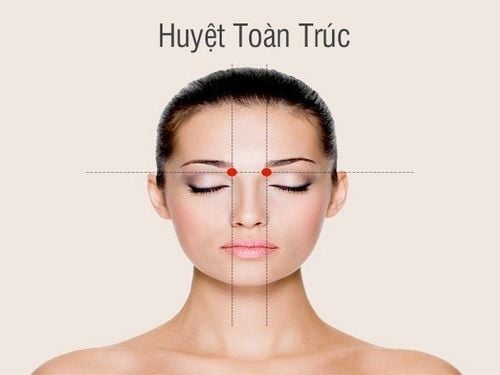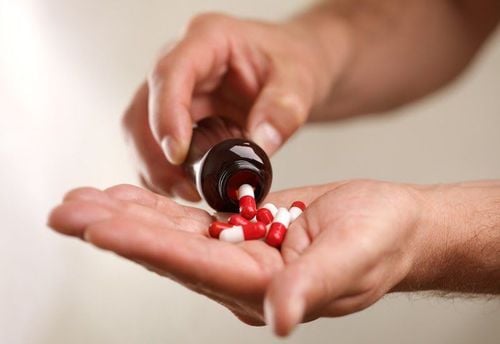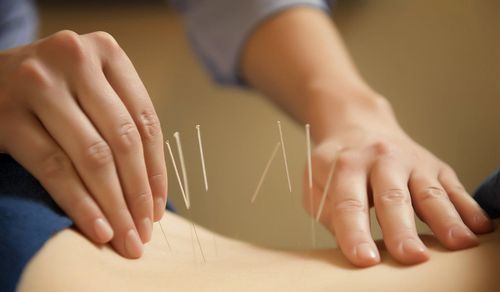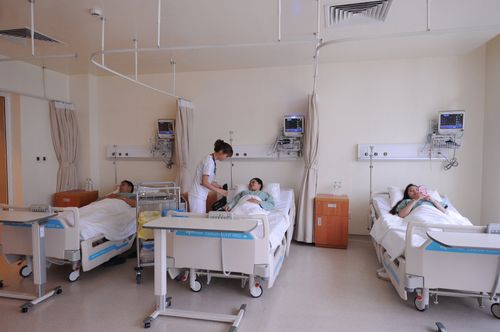This is an automatically translated article.
Acupuncture involves inserting very thin needles through the skin into key points on your body to treat pain. It is increasingly used for overall wellness and including stress relief. This article will provide information on how acupuncture works, the benefits, and pain relief results of acupuncture.Traditional Chinese Medicine explains acupuncture as a technique to help balance the flow of energy or life force and is known as chi or qi (chee) - believed to flow through pathways (meridians) in the body. your body. By inserting needles into specific points along these meridians, acupuncturists believe that our energy flow will rebalance.
In contrast, many Western scientists consider acupuncture points to be the site of stimulation of nerves, muscles and connective tissue. Some believe that this stimulation will increase the body's natural pain-relieving effects.
Acupuncture is an approach based on ancient Chinese medicine to treat a variety of conditions by inserting needles into specific points on the skin. Paul Kempisty, a licensed acupuncturist in Traditional Oriental Medicine, explains, “Acupuncture is a minimally invasive treatment that stimulates nerve-rich areas of the skin's surface to work. affects various tissues, glands, organs and functions of the body. ”
Kempisty adds: “Each acupuncture needle makes a small wound at the acupuncture site and even though it is just enough to cause little or no discomfort to let the body know it needs to react. This response involves stimulating the immune system, promoting circulation to the acupuncture area, wound healing, and pain relief. Contemporary research on acupuncture is largely based on this theory.”
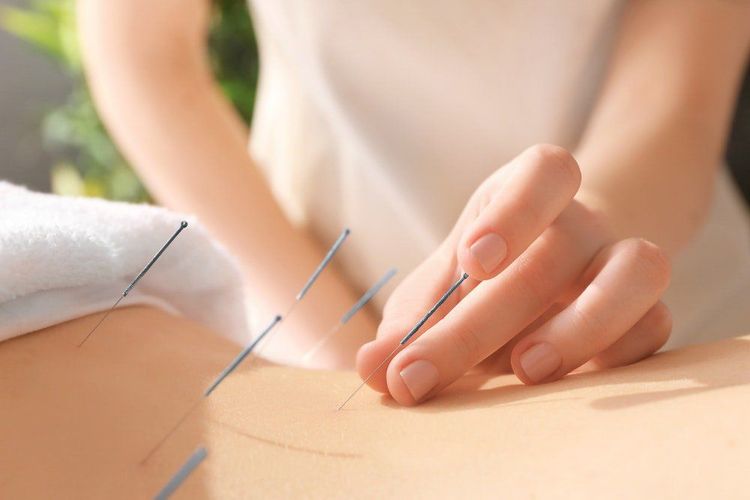
Châm cứu giúp cân bằng dòng chảy của năng lượng
1. The Benefits and Pain Relief of Acupuncture
1.1. The benefits of acupuncture
Acupuncture is mainly used to relieve discomfort associated with a variety of illnesses and health problems, including:Nausea and vomiting caused by chemotherapy and after surgery Toothache Headaches , including tension headaches and migraines Childbirth pain Lower back pain Neck pain Rheumatoid arthritis Menstrual pain Respiratory disorders, such as allergic rhinitis The risks of acupuncture are low if they are performed by The acupuncturist is really competent, and the acupuncture needles are properly sterile. Common side effects of acupuncture include soreness and light bleeding or bruising where the needle was inserted. Disposable acupuncture needles are currently standard practice for acupuncture, so the risk of infection is negligible. However, not everyone can undergo acupuncture treatment. Many people may be at risk for complications if:
Have a bleeding disorder. The chance of bleeding or bruising from the needle is increased if the person has a bleeding disorder or if they are taking blood thinners. Has a pacemaker. Acupuncture involves applying mild electrical pulses to the needles that can interfere with the pacemaker's operation. Pregnant. Certain types of acupuncture are thought to induce labor, which can lead to premature birth.
1.2. The ability to relieve pain with acupuncture
Acupuncture may sound scary, but there is evidence that it can be of great help, especially for patients with chronic pain. For those who are new to holistic healing as a type of treatment, acupuncture may seem a bit intimidatingAcupuncture is certainly not the painful procedure many might be imagining, Considering it's been studied and practiced for over 2,500 years, it looks like acupuncture enthusiasts can take it seriously. Some people see acupuncture as a "miracle" to improve their quality of life as it is said to treat everything from back pain, headaches, and shoulder pain to depression and allergies. , even morning sickness and cramps.
2. How Acupuncture Works
2.1. The Philosophy of Acupuncture
The Chinese philosophy behind acupuncture is a bit more complicated, as the ancient practice is not based on science and medicine. “They believe that the human body is filled and operated by an invisible vital force which they call 'qi' (pronounced 'chee') and that when qi circulates well and goes to all places, suitable, then a person will experience good mental and physical health. Acupuncturists say: When qi flows improperly (obstructed or deficient) it leads to illness.The concept of qi is not so strange - think of it as the natural inner workings of our bodies. Sometimes, we are more likely to get sick when we feel stressed or anxious. When you feel comfortable and healthy, your body also reflects that physically. After all, a person's mood, mental health, and general happiness affect their own physical health. Therefore, acupuncture aims to assist people in achieving balance, or reaching the best state of qi, and as a result, helps alleviate many ailments.
Although there is no evidence that acupuncture is a true miracle cure, there does seem to be some evidence that acupuncture is a worthwhile treatment for people with many medical conditions same time. That's why it's been around for over 2,500 years, and as research grows, our knowledge of what it does and what happens in the body during acupuncture will gradually elucidated.
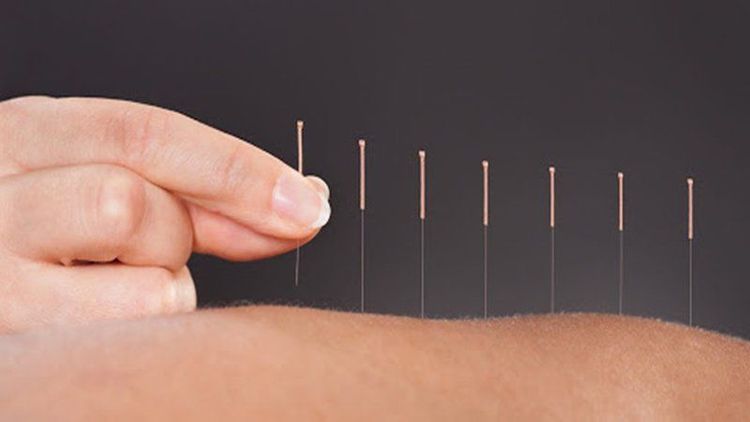
Sau khi châm cứu bạn sẽ thấy thư giãn và đầy sinh lực
2.2. How acupuncture works
Before AcupunctureDuring the pre-acupuncture treatment, the acupuncturist inserts very thin needles into specific points on the patient's body. This process is usually less uncomfortable. Each practitioner of acupuncture has a unique style, often blending aspects of Eastern and Western medical approaches. To determine what type of acupuncture treatment would be appropriate for a particular patient, a doctor may ask them about their symptoms, behaviors, and lifestyle. In addition, doctors will also check some points such as:
Parts of the patient's body that are painful Shape, coating and color of the tongue Color of the patient's face Strength, rhythm and pulse quality in the patient's wrist This initial assessment and treatment process can take up to 60 minutes. Follow-up appointments usually last about half an hour. A general treatment plan will usually include one or two treatments a week. The number of treatments will depend on the condition being treated and its severity. In general, people usually receive six to eight acupuncture treatments.
During acupuncture treatment
Acupuncture points are located in all areas of the body. Sometimes the appropriate points are located far from the area where the patient feels pain. The acupuncturist will let the patient know each specific place in the treatment plan and whether the patient needs to undress. Robes, towels, or sheets will be provided during acupuncture. The patient is asked to lie on a padded table for treatment, the treatment steps include:
Insert the needle. Acupuncture needles are inserted to different depths at points called acupoints on the patient's body. Acupuncture needles are very thin, so stabbing is usually less uncomfortable. People usually don't feel them inserted at all. Five to 20 needles will be used in a typical treatment. The patient may feel slight pain when the needle reaches the correct depth. Needle manipulation. The doctor may gently move or rotate the needles after placing or applying heat or applying mild electrical pulses to the needles. Withdraw needle. In most cases, the needle stays in place for 10 to 20 minutes while you lie still and relax. There is usually no discomfort when the needle is withdrawn. After performing acupuncture
Some people feel relaxed and others feel energized after acupuncture treatment. But not everyone responds to acupuncture. If a patient's symptoms do not show signs of improvement within a few weeks, acupuncture may not be right for them and the doctor will consider other forms of treatment.
The benefits of acupuncture are sometimes difficult to measure, but many people value acupuncture as useful as a method to manage a wide range of painful conditions in their bodies. However, some studies show that many types of simulated acupuncture seem to work just as well as real acupuncture. There is also evidence that acupuncture works best in people who believe in this treatment. Acupuncture has few side effects, so it may be worth a try if we have trouble controlling pain with conventional treatments.
Please dial HOTLINE for more information or register for an appointment HERE. Download MyVinmec app to make appointments faster and to manage your bookings easily.
References: mayoclinic.org, healthline.com



